Rocky desertification refers to the human activities and other processes by which a karst region covered by soil and vegetation transforms into a rocky landscape and affects countries and regions such as southwest China, the Mediterranean, swaths of the Balkan Peninsula, and some Caribbean Islands. A section of Wadu Village, Longyang District, Baoshan City, Yunnan Province, known as Hongnidi, which literally translates to “red mud land,” is located in the heart of a rocky desertified corridor that runs through the region and is home to inhabitants who have raised cattle in the craggy jungle that they live in for at least 20 or 30 generations.
A Hongnidi resident who has engaged in the undertaking since he was a child named Yang Chaoshun used to take his animals to graze on the grass and weeds that grew in the mountains present in the area, just as his ancestors did. Facing various obstacles and bottlenecks, no one expected that livestock farming would eventually become a thriving industry in the area.
Baoshan’s cattle farmers have been developing their beef industry in recent years, but problems tended to increase as their cattle inventories expanded. The weeds and grass that grew along roadside areas and in the mountains provided sufficient amounts of feed in the past but eventually began to hinder the development of the city’s beef industry due to the fact that their quantity and quality tended to be insufficient, for example.
A team led by Chinese Academy of Tropical Agricultural Sciences (CATAS) vice president Liu Guodao focused on developing farming strategies well-suited to specific conditions eventually travelled to Hongnidi in 2019 in order to help address the situation. Its members introduced a hybrid cultivar of two species of Pennisetum, a high-yield genus of forage grasses native to warm temperate and tropical regions of the world more commonly known as fountain grasses, called Pennisetum purpureum K. Schumach. x Pennisetum typhoideum Rich cv. Reyan No. 4 that they developed, established a special workstation dedicated to cattle farming and cultivation of the crop in the compound that Yang lives in because he expressed interest in the undertaking and was the first person in the Wadu Village enclave willing to grow it, and began providing training and assistance.
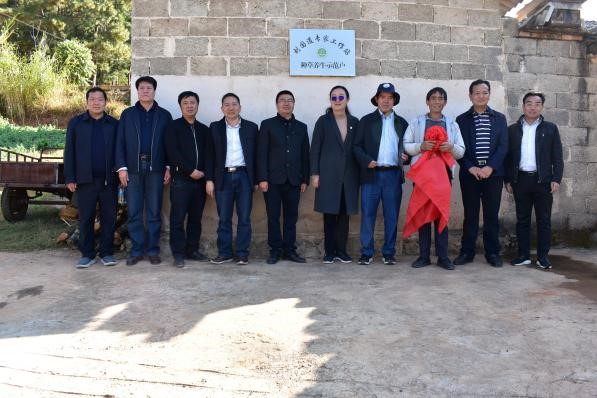
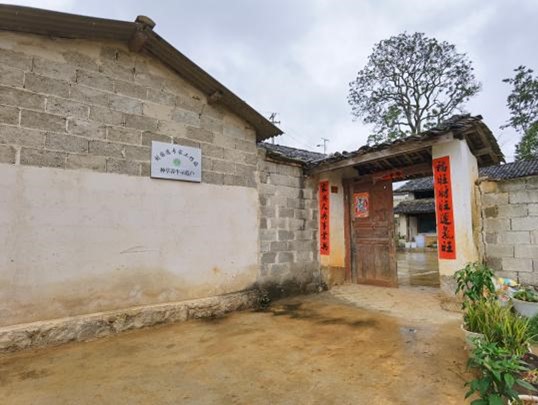
The Chinese Academy of Tropical Agricultural Sciences (CATAS) experts who have provided assistance in a section of Wadu Village, Wadu Township, Longyang District, Baoshan City, Yunnan Province, known as Hongnidi pose in front of a workstation they established in the compound that local cattle farmer Yang Chaoshun lives in (left photo). A view of the workstation and the entrance to the compound (right photo)
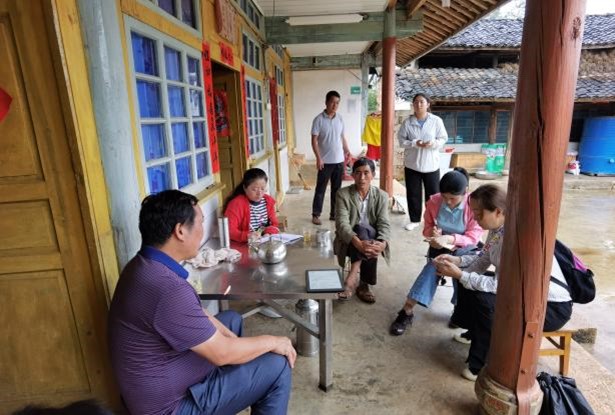
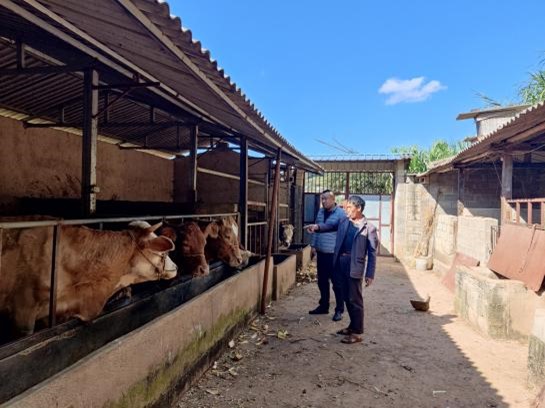
CATAS experts gather information in Hongnidi (left photo). A CATAS expert explains how a Hongnidi farmer can improve his cattle husbandry operation (right photo).
Yang was growing the hybrid cultivar across 4 mu of land and achieving yields of more than 10 tons of usable plant matter per mu by 2021, which was more than enough for his livestock. It took him three hours to reap enough weeds and wild grass to feed just two head of cattle in the past, while he is able to obtain enough fodder to feed seven to eight head harvesting the Pennisetum cultivar for just half an hour. Hongnidi’s farmers began growing more of the cultivar when they became aware of the success that Yang was having with it, which resulted in their animals becoming stronger and healthier and their sales increasing.
“Last year, I sold four [bulls] and made nearly RMB60,000,” mentioned Yang, who keeps his cows in order to obtain more calves, in early 2023. “I was very delighted.”
The farmer decided to replace all of his grass with the Pennisetum purpureum K. Schumach. x Pennisetum typhoideum Rich cv. Reyan No. 4 hybrid cultivar in 2022 due to his satisfaction with the yields that he was achieving and the fact that his cattle find it more palatable than what they were being fed and grazing on in the past.
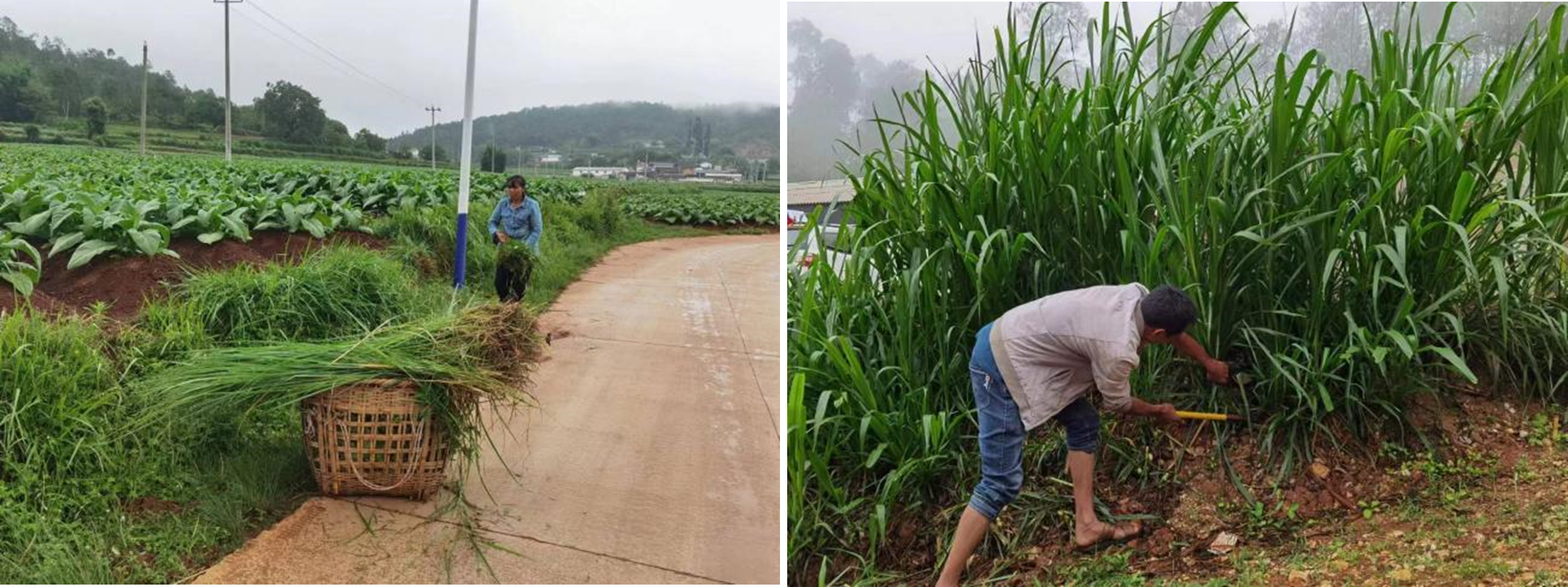
A farmer harvests grass growing along the roadside in Hongnidi (left photo). Another farmer living in the enclave harvests a hybrid cultivar of two species of fountain grass developed by Chinese Academy of Tropical Agricultural Sciences (CATAS) vice president Liu Guodao’s research team on his farmland (right photo), which is a much more efficient way to obtain fodder.
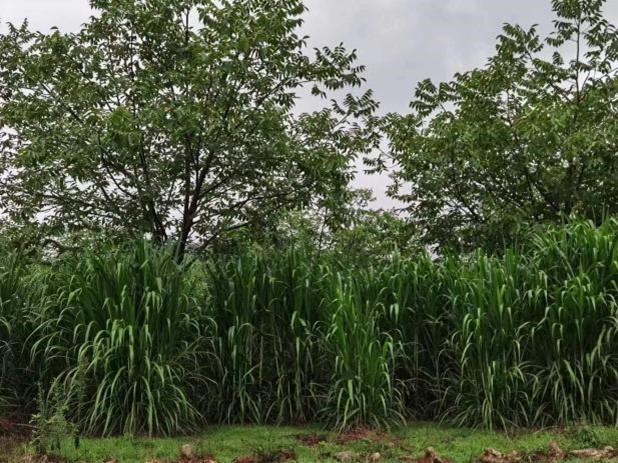
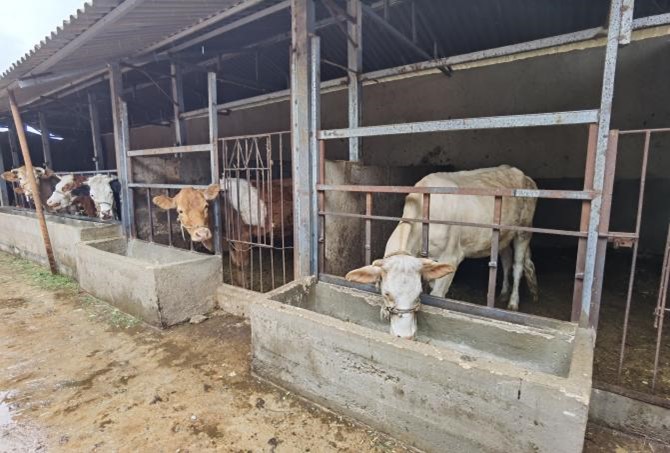
A view of Yang’s fountain grass fields (left photo) and some of his beef cattle (right photo)
A versatile solution with wide adaptability, the cattle-fountain grass farming model that Liu’s team implemented in Hongnidi is suitable for implementation, demonstration, and promotion in countries and regions with subtropical and tropical zones that have been affected by rocky desertification.

For more information, please contact WFP China COE (wfpcn.coe@wfp.org)
Related Links:
The Rocky Areas' Road to Prosperity: 'She Power' Shines in the Practice of Eco-farming
The Rocky Areas' Road to Prosperity: Expert Workstations in a Village
The Rocky Areas' Road to Prosperity: Combating Rocky Desertification in Guizhou's Xingyi
Category
High-yield Fountain Grass Hybrid Boosts Beef Cattle Industry in Yunnan Village
Contributor
High-yield Fountain Grass Hybrid Boosts Beef Cattle Industry in Yunnan Village
Country
Story

